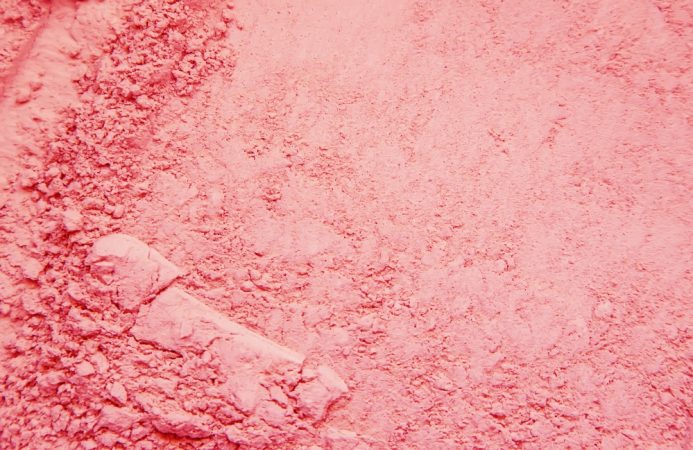In recent years, a novel substance known as “pink cocaine” has surfaced in the recreational drug market, attracting considerable attention from both users and regulatory bodies. Its unique characteristics and potential dangers underscore the need for enhanced awareness and education, especially within the context of drug rehabilitation. This article seeks to explore the various facets of pink cocaine, offering a comprehensive overview aimed at demystifying this substance for better public understanding and safety.
What Exactly is Pink Cocaine?
Contrary to what its name might imply, pink cocaine is not simply a colored variant of traditional cocaine. It is a synthetic drug that mixes the effects of both stimulants and hallucinogens, creating a unique and potent experience. Known on the street as “tucibi” or “2C-B,” it is distinguished by its pink coloration, which adds to its allure among users. Its chemical makeup can vary, contributing to inconsistent experiences among those using it, thereby increasing its risk profile.
The Origin of Pink Cocaine
Developed in the 1970s by chemist Alexander Shulgin, pink cocaine was initially intended for controlled use in psychiatric settings, offering a manageable, psychedelic experience for therapeutic purposes. However, it wasn’t long before it transitioned to the recreational scene, primarily due to its predictable yet profound effects compared to other hallucinogens like LSD. Its usage first took off in the European club scene and has since spread to various parts of the globe, including North and South America.
The Appeal of Pink Cocaine
The primary appeal of pink cocaine lies in its potent effects which include heightened euphoria, enhanced sensory perception, and increased sociability. A study from 2018, found that 2C-B can peak in a person’s system within an hour of taking it. These effects make it especially popular among young adults frequenting the nightlife scene, where the drug’s properties can be exploited to enhance the sensory experiences of music and social interaction. This demographic’s preference for pink cocaine can be attributed to both the novelty of the drug and the unique, intensified experience it offers.
Physical and Psychological Effects
While pink cocaine can induce an intense high that may seem desirable, the physical and psychological consequences can be severe. Physically, the drug can lead to increased heart rate and blood pressure, which are dangerous for individuals with underlying heart conditions. Psychologically, it may cause profound anxiety, paranoia, and hallucinations that can detach users from reality, potentially leading to dangerous behaviors and decisions.
Legal Status and Controversy
Globally, pink cocaine is classified under the same legal framework as other controlled synthetic drugs. Its manufacture, distribution, and sale are generally illegal, although specific legal statuses can vary by country depending on local drug laws. The drug’s recent emergence and variable composition make it a complex issue for law enforcement and legislative bodies trying to curb its spread.
Difference Between Cocaine and 2C-B (Pink Cocaine)
Cocaine and 2C-B, often referred to colloquially as “pink cocaine,” have distinct differences that are important to understand.
Chemical Composition and Classification
Cocaine is a natural stimulant derived from the coca plant, primarily increasing dopamine levels in the brain to create a quick, intense high. In contrast, 2C-B is a synthetic drug that belongs to the phenethylamines class and acts as both a stimulant and hallucinogen, producing effects similar to a combination of LSD and MDMA.
Effects on the User
The effects of cocaine are short-lived, lasting about 15 to 30 minutes, and are characterized by intense energy and alertness. 2C-B effects last longer, from 4 to 12 hours, and are more psychedelic, including enhanced sensory perception and emotional shifts.
Health Risks
Cocaine’s health risks are primarily cardiovascular, such as heart attacks and strokes. 2C-B’s risks are more psychological, including the potential for severe paranoia and anxiety, though it can also cause physical issues like hyperthermia.
Comparing Pink Cocaine to Other Designer Drugs
Pink cocaine is often compared to other designer drugs like MDMA (Ecstasy) or bath salts due to its synthetic nature and psychoactive properties. However, unlike MDMA, pink cocaine offers a more hallucinogenic experience, which can be more unpredictable due to variations in its chemical composition. This makes pink cocaine a particularly risky choice among synthetic drugs.
Risks Associated with Pink Cocaine
The risks associated with pink cocaine are substantial and multifaceted, impacting users both physically and psychologically. As a synthetic drug with both stimulant and hallucinogenic effects, pink cocaine poses a unique set of dangers that can have long-lasting implications.
Physical Health Risks
Physically, pink cocaine can exert severe stress on the cardiovascular system. Users may experience a rapid increase in heart rate and blood pressure, which can be particularly dangerous for those with pre-existing heart conditions. The stimulant properties can also lead to hyperthermia, or dangerously high body temperature, as well as potential respiratory distress. Additionally, because pink cocaine is often taken in party settings, the combination of dancing and crowded environments can exacerbate these effects, increasing the risk of dehydration and acute medical emergencies.
The drug’s unregulated nature further complicates these risks, as the lack of consistency in dosage and purity can lead to accidental overdoses. Each batch of pink cocaine can vary significantly, meaning even experienced users can miscalculate and consume too much, leading to toxic and potentially lethal consequences.
Psychological Health Risks
Psychologically, pink cocaine can be just as damaging. Its hallucinogenic effects can alter perception and cause disorientation, which in some cases leads to anxiety, panic attacks, and paranoia. These intense experiences can be traumatic, leaving lasting psychological scars. Frequent use can also lead to more severe mental health issues such as persistent psychosis and hallucinogen-persisting perception disorder (HPPD), where users experience flashbacks and visual disturbances long after the drug has been consumed.
Moreover, the psychological dependency on pink cocaine can develop quickly as users chase the euphoric high it produces. This can lead to a cycle of abuse and addiction, where more of the drug is needed to achieve the same effects, and withdrawal symptoms occur if the user tries to stop. These symptoms can include fatigue, depression, and intense cravings, making it difficult to cease use without professional help.
Social and Behavioral Risks
The use of pink cocaine can also lead to problematic social and behavioral changes. The drug’s effects can impair judgment and disinhibit behavior, leading to risky decisions such as unprotected sex or dangerous driving, which have their own set of severe consequences. Moreover, the illegal nature of the drug can expose users to criminal environments and potential legal repercussions, which can impact employment, relationships, and future opportunities.
Treatment Options for Pink Cocaine Addiction
Addressing addiction to pink cocaine requires a comprehensive approach, including detoxification to manage withdrawal symptoms, followed by psychological counseling and support groups. Given the drug’s strong psychological effects, behavioral therapies are critical to help recover individuals understand and modify their behaviors related to drug use.
Overcome Addiction at
Safe and Sound
Pink cocaine represents a significant challenge in the landscape of recreational drugs due to its potent effects and potential for harm. Understanding this substance, its risks, and the available treatment options is crucial for individuals, families, and communities affected by its use.
If you or a loved one are struggling with substance abuse, get in touch with Safe and Sound Treatment. Our drug rehab facility is dedicated to providing individuals with an encouraging environment to overcome the challenges of alcohol and drug addiction.
FAQs
Pink cocaine, unlike regular cocaine, is a synthetic drug that combines stimulant and hallucinogenic properties. It is chemically distinct from cocaine and varies widely in composition, which can lead to unpredictable effects.
Pink cocaine is illegal in most countries. It is typically classified alongside other controlled substances due to its potential for abuse and harm.
If you suspect someone is using pink cocaine, approach them with concern and support. Encourage them to seek professional help and offer to assist them in finding appropriate treatment resources.
Resources for dealing with pink cocaine addiction can be found through local health clinics, addiction treatment centers, and online platforms dedicated to drug recovery. National helplines and websites also provide guidance and support for addressing substance abuse issues.
Yes, pink cocaine (2C-B) can be addictive, primarily due to its psychological effects. Users may develop a compulsive desire to use the drug to replicate its unique sensory experiences and altered perceptions, leading to psychological dependency. Treatment usually involves behavioral therapies and support groups to help manage this addiction.













